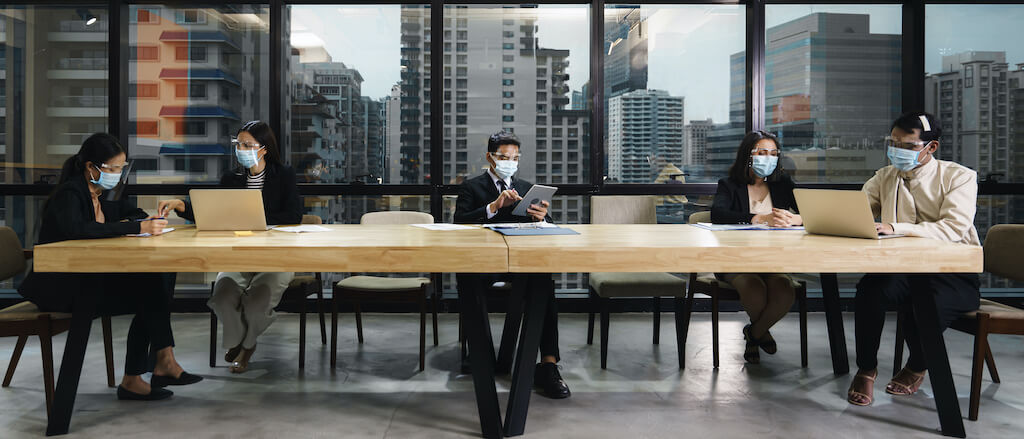
As employees in some countries return to the office amid the Covid-19 pandemic, safety is paramount.
Some parts of the world are going into stricter lockdowns, but others are in the process of gradually easing Covid-19 restrictions. For instance, Singapore is set to move into phase 3 of its reopening on Dec 28th. While the authorities have yet to decide whether workplace restrictions will be relaxed, many companies are beginning to develop plans for a possible return.
Whatever the return date and return model – a hybrid (a combination of on-premises and remote employees) workforce, or a fully on-site workforce – employee concerns demand that companies have a clear plan and processes in place.
Studies show that the coronavirus and the resultant lockdowns have created fear, uncertainty and doubt that persist even as restrictions ease.
HR leaders tell us that many workers question if it is actually safe to return to work even in countries with declining infection rates. Will they be putting themselves and their families at risk?
Those with pre-existing conditions, with family members who are similarly vulnerable, with household members who are working as frontliners, or with family care duties are generally exempted from returning.
But what can you do for the rest?
DESIGN A COMPREHENSIVE PLAN; COMMUNICATE AND ADDRESS QUESTIONS
Start by forming a multi-disciplinary team to formulate a comprehensive return plan that lists and explains all the necessary steps you’re taking to ensure compliance with recommended safety measures.
This team should also devise a communication plan to ensure that every employee is informed of the details of the return framework.
Provide your returning employees with masks, gloves and other protective equipment. If you’re not able to provide these, be prepared to explain why. According to Mercer’s Covid-19 Pulse Survey, 80 per cent of companies in the Asia-Pacific region plan to provide masks, compared to 63 per cent globally. Various surveys show that employees view the provision of such gear as an integral part of a return strategy.
After disseminating your safety-related communication messages, you should follow up with a video call to describe what the new workplace will look and feel like. Simulate and record the new workplace conditions on video and show it to employees during the video call.
Remember to include time for a free-flowing Q&A. Record these sessions and make the recording available to employees so that they can access it when the need arises.
Among the common concerns that employees raise is that while the employer can ensure the office environment is safe, travelling to work on public transportation networks would expose them to the virus. Be prepared to address such concerns. Are you willing to offer a company shuttle service to minimise their exposure?
HAVE ONE-ON-ONE MEETINGS
Aside from operational requirements, a key consideration in deciding whether an employee should return to the workplace or continue working remotely, is where he/she is most productive.
One-on-one meetings will help you understand employees’ emotions about returning to the workplace, the degree of flexibility they require, whether they are more effective and can contribute to the team just as effectively while working remotely, or whether they require you to take even more measures to help them feel safe enough to return to the workplace.
IMPLEMENT A MONITORING AND RESPONSE FRAMEWORK
Your plan should include monitoring and employee listening mechanisms.
What’s happening on the ground as more employees return to work? For example, is there an increase in absenteeism? What are the reasons for this? How are employees feeling? Is there a need for even more safety measures?
Develop a playbook based on such feedback.
REGULARLY REVIEW AND UPDATE YOUR CONTINGENCY FRAMEWORK
All through the reopening process, remember to keep your contingency framework updated and be ready to implement it should the need arise.
Let’s face it. We’re not yet safe from Covid-19. Even when we get to that stage, the possibility of another pandemic remains. You should always be prepared to close workplaces swiftly or continue operations with a reduced workforce. Continue improving your remote work infrastructure and policies, and train employees to perform multiple functions within the company so they can deliver should there be a need to.




Leave A Reply